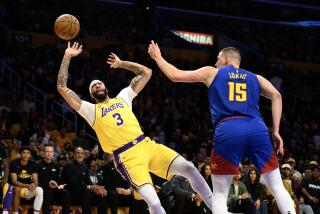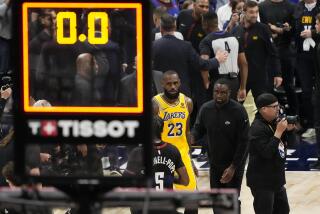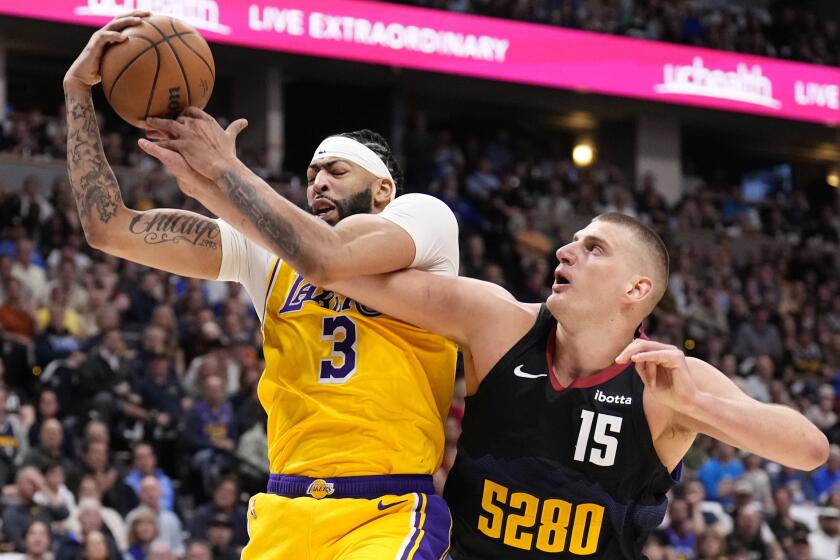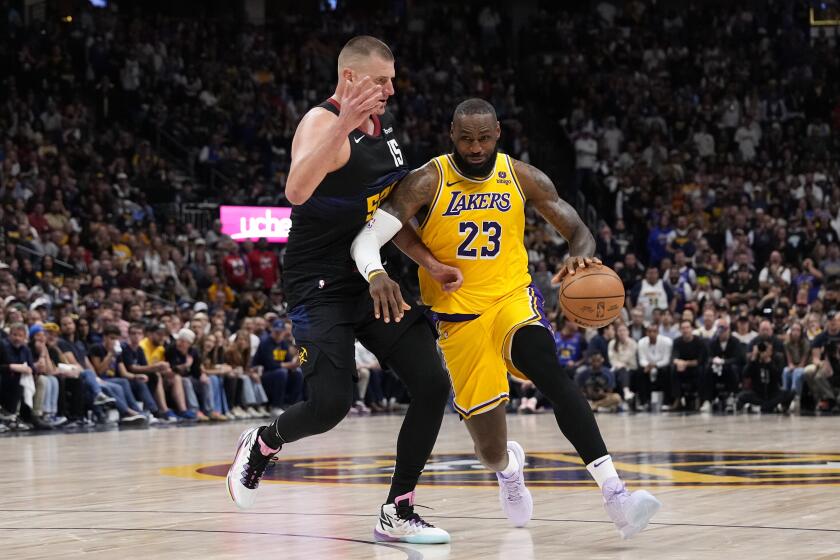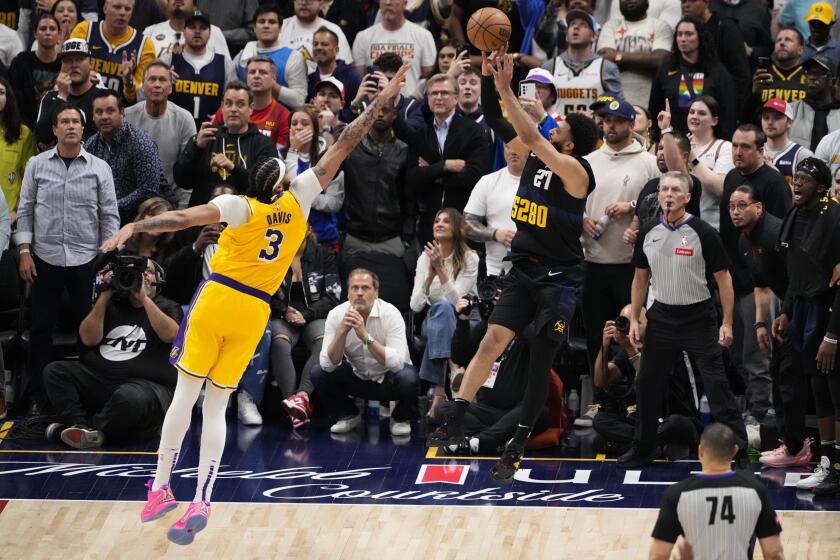Bill Walton is back on his feet
From San Diego
“Once in a while you get shown the light
in the strangest of places if you look at it right.” —- Jerry Garcia
Bill Walton is grateful he’s not dead, but it wasn’t too long ago, he says, “that I went from thinking I was going to die, to wanting to die, to being afraid I was going to live.
“You have no idea where I have been.”
He says this while coming to his feet on a perch behind his San Diego home overlooking Balboa Park, the hair just as disheveled but gray now rather than red, standing now on two fused ankles, medical talk of amputating one of his feet fortunately never going beyond just that.
He raises his arms to the sky, which he does a lot these days, sturdy for now on two shot knees, “hands and wrists,” as he says, “that don’t work,” two titanium rods and four bolts holding his spine in place.
“I’m the luckiest guy in the world,” he says while standing there reaching for the sky with raised arms. “I can’t stop smiling.”
Thirty-six orthopedic surgeries in his 57 years of life to date, pain in his spine so excruciating, so relentless the past two years he lay flat on the floor of his home, recoiling in fear if anyone came within five feet of him, eating his meals on the floor, crawling and sliding to the bathroom.
“When you’re on the ground and can’t move, there is no difference between morning and night,” he says. “It’s endless. You just want it to go away, but it’s every day to where you see nothing but that forever.”
He was playing basketball for UCLA 36 years ago, a game against Washington State, he’s high in the air and “when you’re high above the basket and someone comes running from the other side of the court and takes your legs out from under you, I’d call that a deliberate act of vicious dirty play,” he says.
“That’s where my back problems started. You just deal with it,” says Walton, who played 10 years in the NBA. Coach Wooden taught us a lot, and one of his mantras applies here: ‘Things work out best for those that make the best out of the way things work out.’ ”
But then he could no longer deal with it. “One of the great fallacies in life is that it’s just about hard work and if you just try a little harder,” he says.
He tried everything, and nothing worked. He got off an airplane at the San Diego airport two years ago and crumbled to the ground. He fought back, but then the pain became so debilitating he was flat on his back again.
“You could never know, there are people out there who do know, but you have to be there,” he says. “Hope dies last, but you need to see there is a tomorrow. But in time I had no reason to believe.”
So he began thinking about taking his own life. “I was standing there on the edge of the bridge,” he says. “I had a life that was not worth living. I had nothing, nothing.”
And what would Coach John Wooden have said had Walton taken the leap? “What he said to me over and over again,” he says. “You’re the slowest learner I’ve ever had.”
Then he’s on his feet again, his arms raised to the sky, and get used to it, he does it about every five minutes or so, while saying the same thing over and over again: “I’m back in the game of life.”
Broadcaster Jim Gray found the doctor, and the doctor, Dr. Steven Garfin, was doing innovative spinal work. “I just said, make it stop,” says Walton, and although given no assurances, he underwent 8½ hours of surgery.
Seven months later, seven months of more agony, one day he tells his wife, Lori, “I feel it’s turning. I told her, I think I’m going to make it.”
Two days later he’s riding his bike, turning the corner to his home when a teenager, trying to impress some young girls, jumps on a skateboard and dive bombs the bike rider. He loses control, plows into Walton, breaking Walton’s pelvis and tailbone.
“But the fusion holds,” he says, the kids running off and Walton lying in the street until neighbors find him.
Three more months on his back where he cannot move, on the bottom again, Walton says, but he’s on his feet now, and you would never know where he’s been.
“Bill Walton 15.0,” he says. “I’m up every morning at 3:30 saying ‘let’s go.’ In the pool at 4:30, so many things I want to do.”
He’s working on education projects, music, the environment, while also getting the word out on Dr. Garfin and what he can do to save lives seemingly lost.
“Go take a look at the people in Dr. Garfin’s waiting room,” he says. “You have people with these erector sets on their heads, tubes coming out, but look at their spouses and the look on their faces. Broken spirits, broken dreams. I feel for those people.”
He’s also pumping up awareness in the “Million Dollar Challenge,” to raise funds for the Challenged Athletes Foundation to buy more wheelchairs and prosthetics.
“I’m building a new career,” he says, his enthusiasm overwhelming again and NBA basketball just not as much fun without him behind a microphone. “My goal? I want to make a difference in the lives of people.”
He still loves basketball, his admiration for Chick Hearn right there with Garcia and Bob Dylan, and he had the Lakers taking on the Celtics in the Finals weeks ago.
When this season began, though, he was still on a cane, the phone ringing and it was NBA Commissioner David Stern inviting Walton to join him at Staples Center for the Lakers’ opener.
“He says he’s going to have the honor of putting the championship ring on my son’s finger and he would like me to be his guest,” Walton says. “I call Luke, and tell him I’m up in the suites with the commissioner and don’t know if I’ll get down to see him.
“Luke is a polite young man, but he interrupts,” and as Walton recounts the moment, he stops and he cannot speak. Time passes.
“Nothing like the pride a father has for his son,” he manages to say.
He’s crying now. “Luke says to me, ‘Dad, you’re a player; get out of that suite and get down on the floor where you belong.’
“I’m sorry,” Walton says, while wiping away tears of joy, and you guessed it, he’s on his feet again, the Bill Walton everyone remembers — reaching for the sky with every reason to believe now he’ll be able to touch it.
More to Read
All things Lakers, all the time.
Get all the Lakers news you need in Dan Woike's weekly newsletter.
You may occasionally receive promotional content from the Los Angeles Times.
